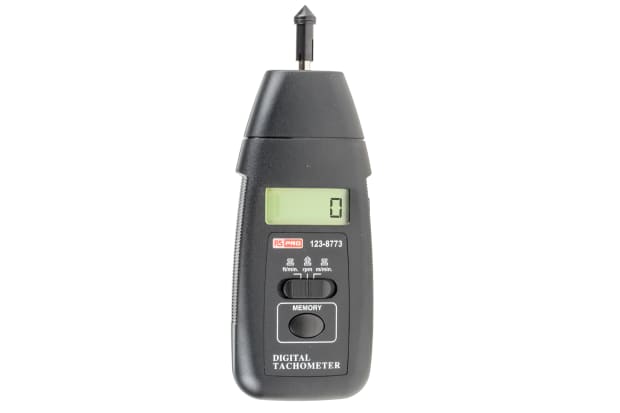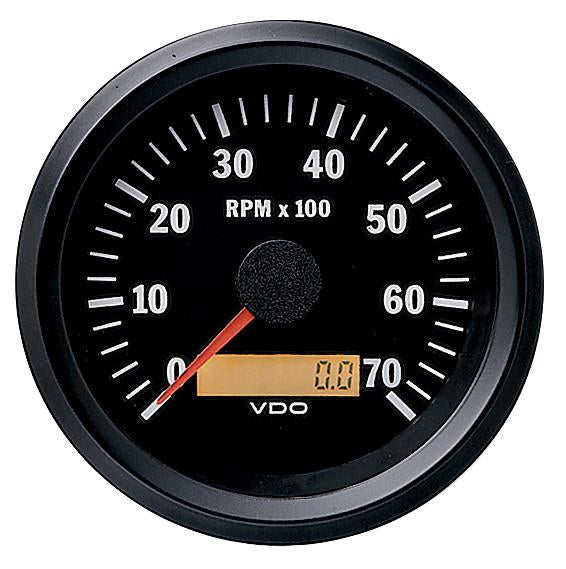The Importance of a Tachometer in Keeping Track Of Engine Rate and Performance in Automotive Applications
In the world of vehicle engineering, the tachometer stands as a pivotal tool in the chauffeur's collection, giving a direct home window right into the inner workings of an automobile's engine. Past its feature as a mere scale of transformations per min (RPM), the tachometer offers as an important device for enthusiasts and professionals alike, supplying real-time understandings into engine performance and health. Comprehending the importance of this gadget goes past surface-level monitorings, delving into the elaborate partnership in between engine rate, power result, and total driving experience. As we check out the complex function of the tachometer in vehicle applications, a deeper appreciation for its effect on lorry dynamics and efficiency starts to arise.
Significance of Checking Engine RPM
Keeping an eye on engine RPM, or changes per minute, is an essential aspect of vehicle maintenance and efficiency assessment. Engine RPM straight associates with the speed at which the engine's crankshaft revolves, suggesting how promptly the engine is running - tachometer. By keeping track of RPM, auto mechanics can assess the health and wellness of the engine, find possible concerns, and fine-tune efficiency. An unusual RPM analysis might signify troubles such as engine misfires, malfunctioning ignition system, or problems with the gas shipment system. Constantly high RPM analyses can show aggressive driving routines or the demand for a higher equipment change to enhance gas efficiency.
Moreover, monitoring engine RPM is crucial for efficiency analysis in racing and high-performance lorries. In recap, keeping an eye on engine RPM is not only crucial for discovering problems but additionally for optimizing engine performance in different vehicle applications.

Benefits of Real-Time Data
In automobile applications, real-time information plays an essential duty in offering instantaneous understandings into the efficiency and condition of the vehicle. By continually keeping track of numerous criteria such as engine rate, temperature, gas consumption, and much more, real-time data offers many benefits that add to enhanced effectiveness and safety and security on the roadway.
One considerable benefit of real-time data is its capability to alert chauffeurs and technicians to any type of abnormalities or problems without delay. This proactive strategy makes it possible for quick recognition of potential troubles, permitting for timely treatments to stop more damage or malfunctions. Additionally, real-time information promotes efficiency optimization by giving instant responses on driving behaviors and engine efficiency. Drivers can change their actions in real-time based on this information to attain far better gas economic climate and extend the life-span of their automobile.

Additionally, real-time information plays a crucial role in modern vehicle diagnostics, enabling professionals to quickly detect and address malfunctions. This causes decreased downtime, reduced maintenance costs, and inevitably, enhanced general vehicle integrity and durability (tachometer). By utilizing the power of real-time information, automobile stakeholders can make informed decisions that favorably influence both the efficiency and durability of the automobile
Effect On Gear Shifts
Efficient gear changes in auto applications dramatically affect general efficiency and driving experience. The tachometer plays a vital duty in optimizing equipment shifts by providing real-time engine speed data to the driver. When coming close to the redline on the tachometer, it indicates the vehicle driver to upshift to avoid over-revving the engine and triggering prospective damage. On the various other hand, downshifting at the right moment can help maintain the engine in its power band, guaranteeing you could try these out responsive acceleration when needed.
In addition, the tachometer aids in accomplishing smoother equipment changes, especially in hand-operated transmissions. By checking engine speed, motorists can execute gear changes at the ideal RPM range, decreasing jerking movements and minimizing endure the transmission components. This precision in equipment adjustments not only improves driving comfort yet also adds to sustain efficiency.
Enhancing Gas Effectiveness
Given the vital duty the tachometer plays in maximizing gear shifts for efficiency and engine wellness, it straight adds to making best use of gas efficiency in automotive applications. By giving real-time responses on engine rate, the tachometer aids motorists in preserving one of the most efficient RPM array for gas economy. When chauffeurs consistently keep an eye on the tachometer and readjust their motoring practices as necessary, they can prevent unneeded fuel consumption brought on by over-revving or lugging the engine.
Furthermore, the tachometer helps vehicle try this web-site drivers identify one of the most fuel-efficient equipment to be in at any type of given minute, avoiding the engine from functioning tougher than essential. This is specifically essential during acceleration and travelling, where being in the best gear can considerably influence fuel performance. Furthermore, the tachometer can signal motorists to prospective mechanical problems that could be negatively influencing fuel economic climate, such as a slipping clutch or a stopped up air filter. In conclusion, the tachometer works as a useful device in enhancing gas effectiveness by advertising optimum driving habits and recognizing locations for enhancement in the vehicle's efficiency.

Optimizing Engine Longevity
The tachometer's role in monitoring engine rate and efficiency is crucial in making certain the longevity of automobile engines. Keeping track of the tachometer allows vehicle drivers to stay within the pop over to these guys suggested RPM range for their vehicle, stopping unneeded strain on the engine and expanding its life-span.

Verdict
To conclude, the tachometer plays an important function in keeping track of engine rate and performance in automotive applications. By providing real-time data on RPM, it permits efficient equipment changes, improved fuel performance, and made the most of engine longevity. This device is essential for maintaining optimum engine performance and making certain the total performance of a car.